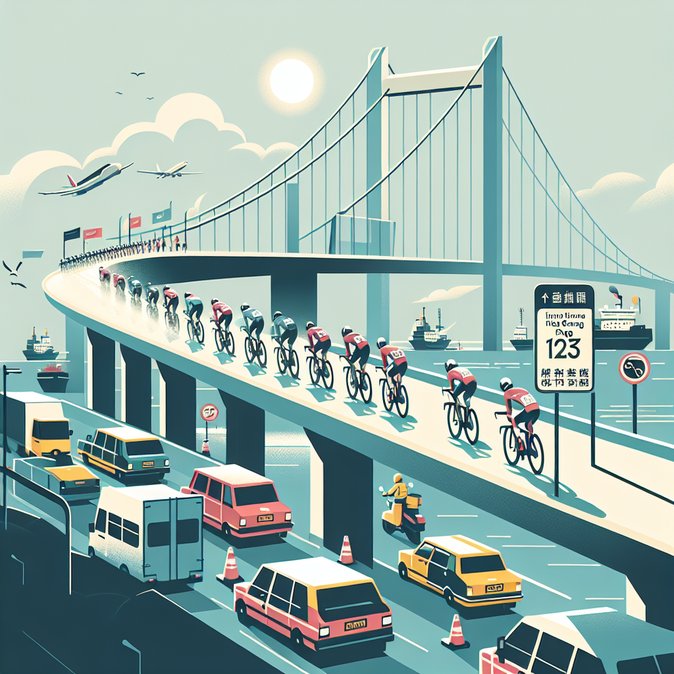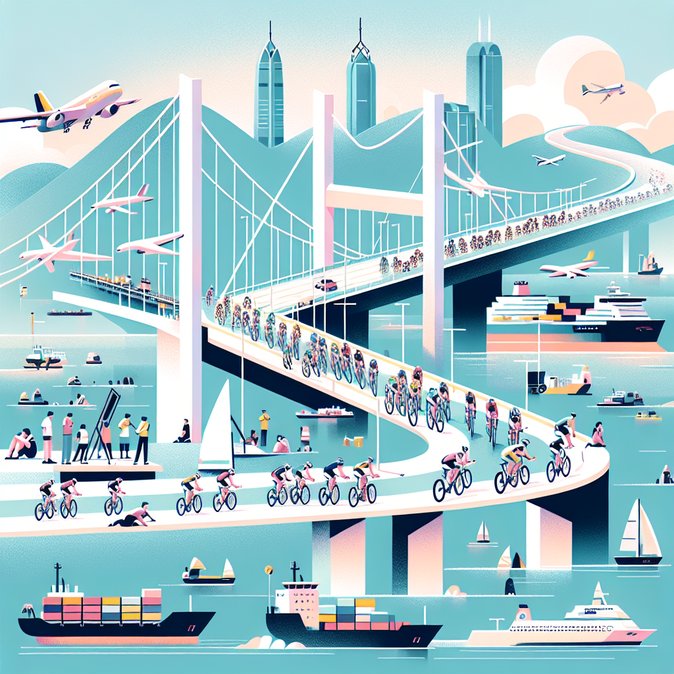
Hong Kong’s busiest land-sea border link, the Hong Kong-Zhuhai-Macao Bridge (HZMB), fell silent for five hours on 8 November as 104 elite cyclists tore across its carriageways during the men’s individual road race of the 15th National Games. Traffic towards Zhuhai and Macao from Hong Kong was halted from 7:30 a.m. to 12:30 p.m., while east-bound traffic heading into Hong Kong was stopped from 9 a.m. Travellers and logistics operators were told to complete departure formalities by 6:30 a.m. or divert to other land checkpoints. The North Lantau Highway—Hong Kong’s main road to the airport—also operated under rolling closures, extending journey times to Chek Lap Kok by up to 30 minutes.
Although advance warnings were issued, immigration officers reported that several hundred outbound passengers still arrived at the bridge port after 8 a.m. and were turned away, disrupting business meetings and weekend leisure trips into the Greater Bay Area. Airport shuttle operators beefed up frequencies on the Lok Ma Chau and Shenzhen Bay routes to cope with the spill-over. Forwarders moving temperature-controlled goods between Hong Kong International Airport and factories in Zhuhai switched to the marine Ro-Ro pier at Tuen Mun, adding four hours to round-trip schedules.
![Cross-border Cycling Race Shuts Hong Kong-Zhuhai-Macao Bridge, Causing Half-Day Border Disruption for Travellers]()
The bridge reopened on schedule at 12:30 p.m. and full cross-boundary coach services resumed after 1 p.m. However, transport consultants estimate that some 18,000 passenger movements—roughly 40 per cent of a normal Saturday morning—were displaced. Affected ticket-holders can apply for full refunds or re-bookings within 30 days, according to the HZMB Shuttle operator.
For corporates, the episode underscores the importance of contingency planning around Hong Kong’s growing calendar of mega-events. Firms with frequent GBA travel should map multiple land routes and factor in longer lead times for just-in-time deliveries. Mobility managers are also advised to monitor the Government Logistics Department’s “Special Traffic News” feed and set up SMS alerts for staff.
Looking ahead, officials hinted that future major-event closures may be shortened by opening one carriageway to high-occupancy vehicles under police escort. Stakeholder consultations will begin in early 2026, but until then, travellers can expect similar full closures during the National Games track-cycling events next week.
Although advance warnings were issued, immigration officers reported that several hundred outbound passengers still arrived at the bridge port after 8 a.m. and were turned away, disrupting business meetings and weekend leisure trips into the Greater Bay Area. Airport shuttle operators beefed up frequencies on the Lok Ma Chau and Shenzhen Bay routes to cope with the spill-over. Forwarders moving temperature-controlled goods between Hong Kong International Airport and factories in Zhuhai switched to the marine Ro-Ro pier at Tuen Mun, adding four hours to round-trip schedules.

The bridge reopened on schedule at 12:30 p.m. and full cross-boundary coach services resumed after 1 p.m. However, transport consultants estimate that some 18,000 passenger movements—roughly 40 per cent of a normal Saturday morning—were displaced. Affected ticket-holders can apply for full refunds or re-bookings within 30 days, according to the HZMB Shuttle operator.
For corporates, the episode underscores the importance of contingency planning around Hong Kong’s growing calendar of mega-events. Firms with frequent GBA travel should map multiple land routes and factor in longer lead times for just-in-time deliveries. Mobility managers are also advised to monitor the Government Logistics Department’s “Special Traffic News” feed and set up SMS alerts for staff.
Looking ahead, officials hinted that future major-event closures may be shortened by opening one carriageway to high-occupancy vehicles under police escort. Stakeholder consultations will begin in early 2026, but until then, travellers can expect similar full closures during the National Games track-cycling events next week.








